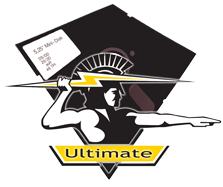 testo tratto dalla Homepage 1541 Ultimate:
testo tratto dalla Homepage 1541 Ultimate:
- 184 Ultimate-II units shipped.
- The last few (5) will be shipped out tomorrow….
- If you paid after June 1, you will need to wait until the new production batch is finished. (Refund possible..)
- New production startup in progress!
- Unprocessed payments will be processed before the end of the week (week 27). Please hold your payments until further notice!
- Question of redistributing the Free Xilinx tools within a virtual machine is under review by the legal department of Xilinx. If they approve, I can provide the planned virtual machine; if not, I will need to write instructions on how you can instal the tools separately.
- Last firmware version: 2.0RC4. Downloadable update available by end of week 28.
source: 1541ultimate.net
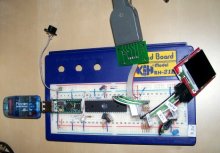 Luigi Di Fraia sta lavorando alla versione 3 dell’interfaccia DC2N. Con questa interfaccia sara’ possibile leggere le cassette e trasferire i dati su una scheda SD (Securedigital).
Luigi Di Fraia sta lavorando alla versione 3 dell’interfaccia DC2N. Con questa interfaccia sara’ possibile leggere le cassette e trasferire i dati su una scheda SD (Securedigital).
La nuova versione ha anche il supporto USB e utilizza uno schermo grafico per mostrare il segnale che viene registrato. Puoi guardare i video della DC2N Versione 3 su youtube.
source: commodore-gg.hobby.nl
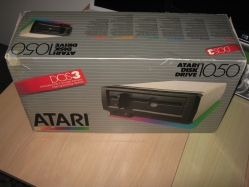
Autopsy:
L’unità disco Atari 1050 è l’evoluzione della versione 810, questa nuova versione è compatibile con i Floppy Disk Dual Density, molti utenti Atari apprezzarono molto questa caratteristica e l’unita’ Floppy vendette molto.
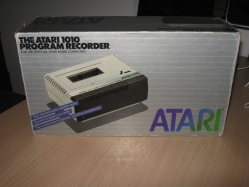
Autopsy:
Il registratore a cassette Atari 1010 è l’evoluzione della versione 410. Il nuovo registratore a cassette 1010 era famoso per la sua linea Elegante / Robusta e affidabile.
l’Atari 1010 era molto popolare nel mercato europeo dove la maggior parte del software era disponibile solo su supporto Cassette.
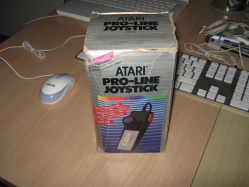
Autopsy:
Questo Joystick veniva venduto come 100% compatibile per la console Atari 7800 , questo perche’ i due tasti di fuoco (fire) funzionavano in modo indipendente. Questo joystick risulta comunque essere compatibile con tutte le Console Atari e Computer 8 BIT.
I tasti funzione (Start / Option / Select / Reset ..) del mio Atari XE 130 non funzionano molto bene, ho deciso di risolvere definitivamente questo fastidioso problema pulendo accuratamente la membrana e utilizzando un po’ di graffite per ricostruire alcune parti consumate della membrana.
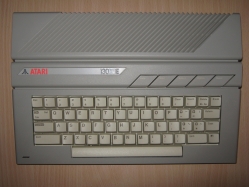
Autopsy:
testo tratto dalle homepage di Wikipedia:
L’epoca Tramiel: la serie XE e XEGS
Anche se la Commodore riuscì a passare indenne la guerra dei prezzi, Jack Tramiel acquistò la Atari dalla Warner, pagandola un prezzo bassissimo. L’idea di Tramiel era quella di produrre un computer ad un prezzo estremamente basso.
Le ultime macchine a 8-bit furono presentate il 5 gennaio 1985 al Winter CES di Las Vegas. Erano il 65XE ed il 130XE. Il 65XE era l’erede del 800XL. Originariamente chiamato 900XLF, il 65XE era quasi equivalente al 800XL (ad eccetto del PBI). Il 65XE (versione europea) e il 130XE avevano l’Enhanced Cartridge Interface (ECI), una variante del Parallel Bus Interface (PBI). Il 130XE aveva 128kB di memoria, accessibile attraverso la selezione di banchi (grazie all’FREDDIE e al chip EMMU). Il modello 800XE, disponibile in Europa, era un 130XE con metà di memoria. La sigla XE significa XL-Expanded. Atari introdusse il 130XE con l’intento di cavalcare la popolarità dell’originale 800XL.
Con il rifiorire del mercato dei videogiochi, trainato dalla Nintendo, Atari produsse il XE Game System (XEGS), rilasciato nel 1987. Il XEGS era venduto assieme ad una tastiera esterna, un joystick, una pistola (XG-1) e un paio di giochi. Questo modello non ebbe mai successo.
Il 1º gennaio 1992, la Atari abbandonò lo sviluppo dei suoi computer a 8-bit.
source: wikipedia
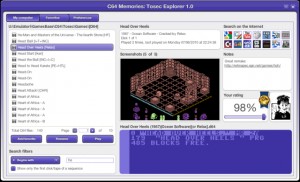 Lo svilupparore “IlTimido” ha rilasciato un nuovo frontend per Windows chiamato C64 Memories. Questo frontend e’ focalizzato sulle collezioni TOSEC che tutti conosciamo.
Lo svilupparore “IlTimido” ha rilasciato un nuovo frontend per Windows chiamato C64 Memories. Questo frontend e’ focalizzato sulle collezioni TOSEC che tutti conosciamo.
C64 Memories features:
- Full support for Tosec naming convention: displayed data about games are taken directly from the filename.
- Supports nearly all C64 images: .D64 .T64 .TAP .PRG .P00 .D71 .D80 .D81 .D82 .G64 .G41 .X64
- Comes with a C64 emulator: C64 Memories uses a slighlty modified version of Vice2.2 emulator.
- Directories display: the list of the content of a .D64 or .T64 file is displayed in automatic by C64 Memories.
- Favorites folder: you can add your favorite games in the favorites folder (and every disk/tape of a sequence is added in automatic).
- Search filters: you can filter results for the first letters, substrings and you can show only the first disk/tape of a sequence.
- Snapshots galleries: your can take screenshots from inside the games and the pictures will be displayed in automatic in C64 Memories.
- Notes: you can add custom notes for every single game.
- Ratings: you can rate every single game.
- Search providers: you can easily find additional informations (review, screenshots, remake, music) over the Internet for every single game just by pressing a button!
source: c64scene.com c64memories

CBM-Command è un disk manager multipiattaforma per Commodore 64 / Commodore 128 / Commodore VIC20 / Commodore C16. L’interfaccia assomiglia al Norton Commander / Midnight Commander ma molto più semplice. La versione per Commodore 128 puo’ girare anche a 80 colonne.
Release Notes – 2010-07-09 – Version 1.0.1/1.0.2
New Features:
- Added support for Commodore Plus 4 computer.
- 32K Expanded VIC-20 now supported.
Changes:
- (VIC20) Refactored many of the screens to better fit the 22×23 layout.
- (VIC20) Filename shortening removed and the file type moved to the left of the directory display.
- (PLUS4) Created color scheme to match the environment.
- (VIC20) Panels are not displayed side by side, only one panel is displayed at a time.
- (VIC20) D64 support is removed, the RAM was needed elsewhere.
- (ALL) The screen has been made more scalable.
Known Issues:
- (VIC20) Many of the keyboard shortcuts on the left side of the keyboard do not work under VICE. After speaking with members of the VICE team they are pretty sure this is a problem in the GETIN kernel routine which is used by cc65. I would greatly appreciate it if someone with a real VIC can verify that the keys do not work on real hardware before I bring the problem up in the cc65 forums.
- (VIC20) I still haven’t figured out why saving the configuration doesn’t work. :(
- (VIC20) CTRL-D and CTRL-E don’t work.
- (VIC20) The launcher doesn’t yet know about the VIC, so it loads the wrong version of CBM-Command.
- (VIC20) The configuration tool cannot save.
source: cbmcommand.codeplex.com
Oggi ho recuperato un paio di cassette con Software per Atari 800/130 .
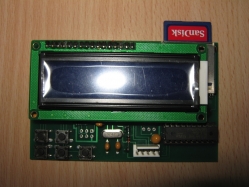
Autopsy:
Prova su banco dell’interfaccia SIO2SD per Atari
L’interfaccia SIO2SD per Atari 8-bit Atari XL / XE è un dispositivo che consente di caricare i giochi e applicazioni da schede di memoria SD/MMC. L’interfaccia viene connessa tramite il connettore SIO (Serial Input/Output) dell’Atari.
Caratteristiche tecniche:
- Works with SD (not SDHC) and MMC(FAT12,FAT16 and FAT32 formats)
- Handles ATR (rw), XFD (ro) and COM/XEX (ro) file types.
- 16×2 LCD display allows to “walk” catalog tree and choose files to load.
- Handles SIO with turbo (allows to set speed index from 1 to 16, default is 6 (69kb/s), in versions 1.x speed index was always 10 (51kb/s))
- All densities with 128B and 256B sectors, including 16MB disks.
- Handles drives D1 to D8.
- Can be configured using ATARI (it’s possible to load configuration tool directly from MCU flash memory, so no SD card is needed)
SIO2SD in Action:
source: sio2sd.gucio.pl marcinprusisz.pl
Nuovi giochi per Commodore 64.
source: noname.c64.org
 Commodore Free Magazine Issue #41
Commodore Free Magazine Issue #41
In questo numero potete trovare:
- Editorial.
- Readers Comments.
- News.
- Interview With Jim Brain.
- Review Of Knight ‘N’ Grail.
- How The C64 Changed My Life.
- Equinoxe – Evolution (8-Bit Girl)
- Interview With 8-Bit Girl.
- Adventures In Time Review.
source: commodorefree.com
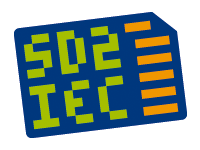 SD2IEC – è un’interfaccia hardware che emula il Floppy Drive 1541 del Commodore 64/VIC20 utilizzando una scheda SD al posto dei Floppy da 5¼ pollici.
SD2IEC – è un’interfaccia hardware che emula il Floppy Drive 1541 del Commodore 64/VIC20 utilizzando una scheda SD al posto dei Floppy da 5¼ pollici.
Hardware e il Firmware sono disponibili sotto licenza open source (GPL).
Changelog:
2010-06-21 – release 0.9.2
- Bugfix: Rename was broken on FAT.
- Turbodisk is now disabled when running on internal RC clock.
- Button debounce timeout increased.
source: sd2iec.de gitweb forum thread c64-wiki
 Jurassic News è una fanzine realizzata da appassionati di retro computing con lo scopo di dare vita ad un periodico gratuito che tratti l’informatica delle origini.
Jurassic News è una fanzine realizzata da appassionati di retro computing con lo scopo di dare vita ad un periodico gratuito che tratti l’informatica delle origini.
Tutti hanno sentito parlare del Commodore64, dello Spectrum o dell’Apple II (tanto per citarne alcuni): sono i nomi fantasiosi dei primi calcolatori personali veramente alla portata di tutti. Qualcuno di voi ne ha posseduto uno o magari lo possiede ancora e ricorda l’eccitazione di quei primi passi nel mondo dell’informatica che ora è ormai esplosa e permanea tutta la nostra vita quotidiana.
Prosegui la lettura…
 testo tratto dalla Homepage 1541 Ultimate:
testo tratto dalla Homepage 1541 Ultimate: Luigi Di Fraia sta lavorando alla versione 3 dell’interfaccia DC2N. Con questa interfaccia sara’ possibile leggere le cassette e trasferire i dati su una scheda SD (Securedigital).
Luigi Di Fraia sta lavorando alla versione 3 dell’interfaccia DC2N. Con questa interfaccia sara’ possibile leggere le cassette e trasferire i dati su una scheda SD (Securedigital).




























































 Lo svilupparore “IlTimido” ha rilasciato un nuovo frontend per Windows chiamato C64 Memories. Questo frontend e’ focalizzato sulle collezioni TOSEC che tutti conosciamo.
Lo svilupparore “IlTimido” ha rilasciato un nuovo frontend per Windows chiamato C64 Memories. Questo frontend e’ focalizzato sulle collezioni TOSEC che tutti conosciamo.
















 Jurassic News è una fanzine realizzata da appassionati di retro computing con lo scopo di dare vita ad un periodico gratuito che tratti l’informatica delle origini.
Jurassic News è una fanzine realizzata da appassionati di retro computing con lo scopo di dare vita ad un periodico gratuito che tratti l’informatica delle origini.


Recent Comments